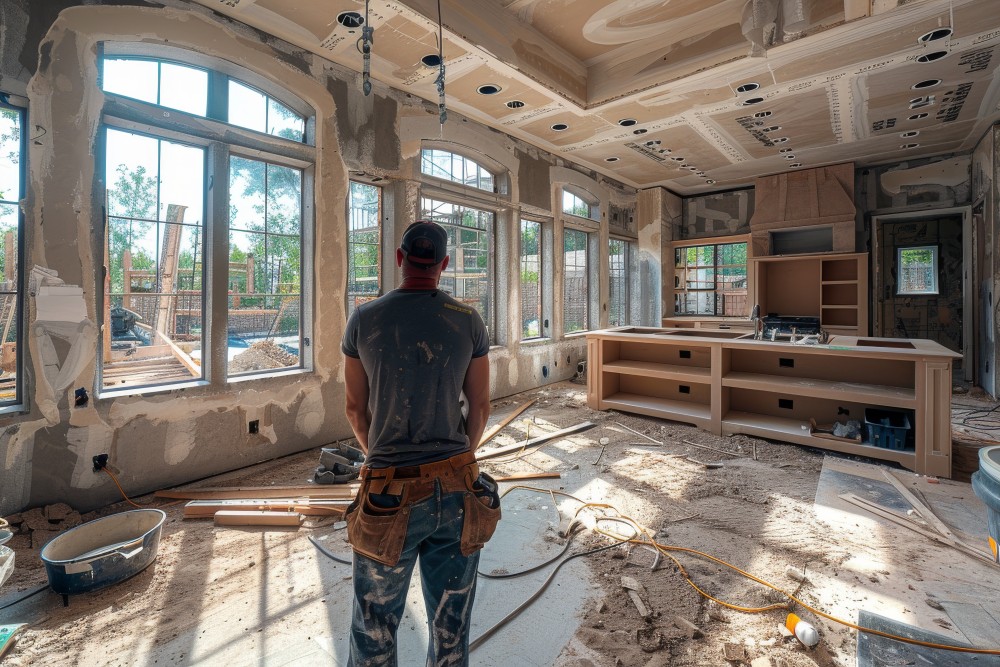1. Poor Planning and Budgeting
Inadequate Planning
- Define Your Goals: Clearly outline what you want to achieve with your project. A well-defined scope of work helps prevent misunderstandings and ensures that all parties are on the same page.
- Detailed Plan: Create a detailed plan that includes every aspect of the project, from design and materials to labor and timeline.
Unrealistic Budget
- Accurate Estimates: Obtain detailed estimates from multiple contractors and include all potential costs, such as materials, labor, permits, and inspections.
- Contingency Fund: Set aside a contingency fund of 10-20% of your budget to cover unexpected expenses or changes in the project scope.
2. Hiring the Wrong Contractor
Lack of Research
- Check Credentials: Verify the contractor’s license, insurance, and certifications. Check their status with your state’s licensing board and ensure they have the necessary permits to work in your area.
- Read Reviews: Look for reviews and testimonials from previous clients. Sites like Yelp, Google, and the Better Business Bureau (BBB) can provide valuable insights into the contractor’s reputation and reliability.
Insufficient Vetting
- Get References: Ask for references and contact them to discuss their experiences. Visit past projects if possible to see the quality of work firsthand.
- Multiple Bids: Interview multiple contractors and compare their bids, ensuring they understand your project and can deliver on their promises.
3. Ignoring Permits and Regulations
Skipping Permits
- Permit Requirements: Research and obtain all necessary permits before starting your project. Failing to do so can result in fines, delays, and even having to undo completed work.
- Code Compliance: Ensure your project complies with local building codes and regulations. This is crucial for safety and legal reasons.
Overlooking Inspections
- Scheduled Inspections: Plan for inspections at key stages of the project to ensure everything meets code requirements. Address any issues promptly to avoid project delays.
Join HICP Homeowner’s Alliance
Connect with experts, get special discounts and enjoy member benefits
4. Using Low-Quality Materials
Cutting Corners on Materials
- Quality vs. Cost: Don’t compromise on the quality of materials to save money. Low-quality materials can lead to frequent repairs and replacements, costing more in the long run.
- Durability: Choose materials that are durable and suitable for your specific project needs. Consider factors like wear and tear, climate conditions, and maintenance requirements.
Unverified Suppliers
- Reputable Suppliers: Purchase materials from reputable suppliers known for quality and reliability. Verify the source and ensure they provide warranties or guarantees.
5. Unrealistic Timelines
Underestimating Timeframes
- Realistic Schedule: Set a realistic timeline for your project, accounting for potential delays such as weather conditions, material shortages, or unforeseen issues.
- Buffer Time: Include buffer time in your schedule to accommodate any unexpected delays without affecting the overall timeline.
Rushing the Project
- Quality Over Speed: Avoid rushing the project to meet an unrealistic deadline. Ensure that each phase is completed correctly before moving on to the next.
6. Lack of Clear Communication
Poor Communication
- Regular Updates: Maintain regular communication with your contractor and project team. Schedule weekly or bi-weekly meetings to discuss progress and address any concerns.
- Document Everything: Keep detailed records of all communications, decisions, and changes to the project. Written documentation helps prevent misunderstandings and disputes.
Unclear Instructions
- Detailed Instructions: Provide clear and detailed instructions for your project. Ensure your contractor understands your vision and expectations.
7. Failing to Prepare for Disruptions
Ignoring Daily Life Impact
- Plan for Disruptions: Home improvements can disrupt your daily life. Plan for these disruptions by setting up temporary living arrangements if necessary and informing your neighbors about the project.
- Noise and Dust: Prepare for noise, dust, and other inconveniences. Take steps to protect your belongings and minimize the impact on your daily routine.
Not Preparing the Site
- Site Preparation: Ensure the site is properly prepared before work begins. This includes clearing the area, protecting non-construction areas, and securing the site.
8. Overlooking the Final Details
Neglecting Finishing Touches
- Final Walkthrough: Conduct a thorough final walkthrough with your contractor to ensure all work is completed to your satisfaction. Address any remaining issues or touch-ups.
- Punch List: Create a punch list of final tasks or corrections that need to be completed before the project is considered finished.
Skipping Post-Project Inspection
- Final Inspection: Schedule a final inspection to ensure everything meets code requirements and project specifications.
- Documentation: Obtain all necessary documentation, including warranties, permits, and inspection reports.
Conclusion
Avoiding common home improvement pitfalls requires careful planning, thorough research, and proactive management. By defining clear goals, setting a realistic budget, hiring the right contractor, obtaining necessary permits, using quality materials, maintaining open communication, preparing for disruptions, and focusing on the final details, you can ensure a successful and stress-free home improvement project. Taking these steps will help you protect your investment and achieve the desired results for your home renovation.



















